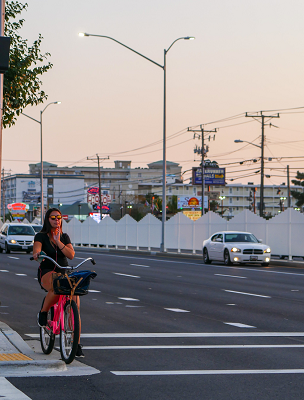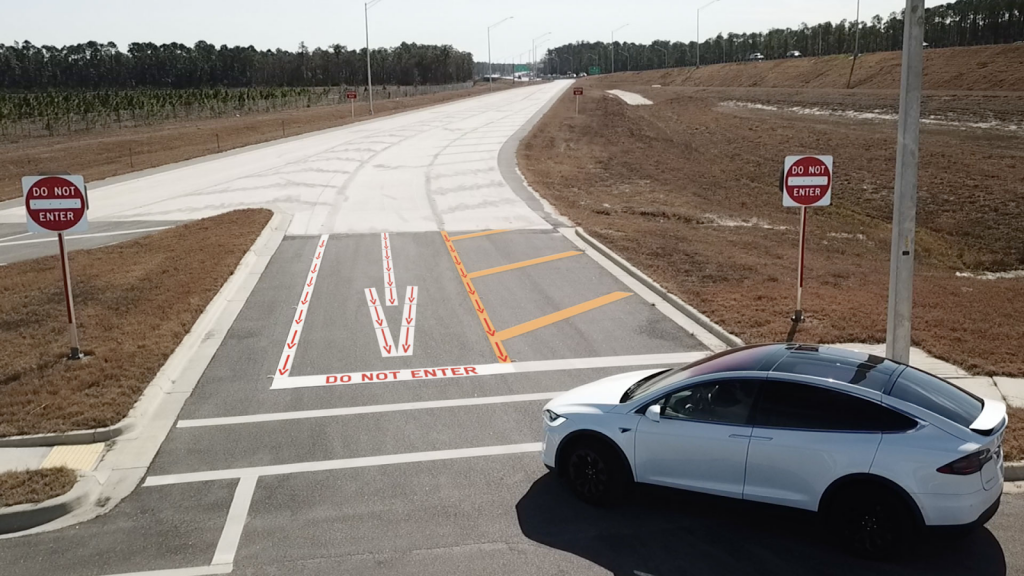Simple Fixes to the Greatest Roadway Safety Threats
- 28,205 motorists
- 6283 pedestrians
- 854 cyclists
35,342 Total Roadway Deaths in the United States*
Those are sobering statistics for just 12 months. Multiplied by a decade and you approach a half a million fathers, mothers, sons and daughters that never said goodbye and were taken too soon.
It’s unacceptable and must change.
While achieving the Zero Deaths goal is ambitious, it’s also complicated with no easy fix.
From a roadway infrastructure perspective, there are some relatively inexpensive ways to impact fatalities. Effective solutions require both a structural (guardrails, medians, etc.) and visual (signs, lines, etc.) delineation. These strategies used together help change the way we see and navigate the roadway.
Pedestrians

The lack of mid-block crossings are notorious hot spots for pedestrian deaths. The scenario occurs when a pedestrian tries to cross 4-8 lanes of traffic moving in opposite directions. Once the pedestrian decides to cross, misjudging vehicle speed or being indecisive can have disastrous consequences. One such example was in Tennessee where pedestrians were forced to cross the street to get to their destinations of retail shops, and a fast-food restaurant. The danger was compounded due to the bus line transfers also on opposite sides of the road. It was a deadly combination that was fixed with a pedestrian refuge and corresponding signage and markings. The total cost was $25,000 and took just hours to install – a small price to pay to save lives. The best news is there have been zero deaths at this location since installation. The solution worked so well, a case study was published about it.
Cyclists

The biggest threat to cyclists is a vehicular impact. Accidents of this nature are particularly deadly because of the physics involved. Since most roadways were not engineered for cyclists, sharing the roadway with a 5,500lb vehicle is a recipe for disaster.
Providing a structural delineation means putting a physical barrier between the car lane and bike lane. One solution is a modular curbing that separates vehicle and bike traffic. It’s both a physical and visual solution due to the high visibility markings and reflective posts. If a distracted or impaired driver does veer outside of their lane, the structure redirects the vehicle back onto the roadway, keeping the cyclist safer. It can be easily installed with basic tools and is an economical solution.
Motorists
By far, the largest block of deaths are due to motorist collisions. The reasons for this are many but two preventable factors are impairment and distraction. In 2018 (the most recent data available) 22,925 of 36,560 total motorist deaths involved at least one driver that was over the legal alcohol limit. It’s important to note that these figures do not account for drivers under the influence of drugs other than alcohol.
One of the ways fatalities happen is when an impaired or aged driver makes a mistake by entering an off-ramp from the wrong direction. These collisions are particularly catastrophic because of the head-on angle and speeds involved. States continue to experiment with many solutions, but few are more simple signs and pavement markings. One particularly innovative solution is a roadway marking that only displays a message if you approach it from the wrong angle. California, North Carolina, and a few other states are in the testing phases of this promising technology.

It’s easy for the untrained eye to oversimplify some of our existing roadway safety problems. There are always unintended consequences and factors to consider. While solutions can be simple, it is never easy to implement. Transportation engineers spend months and sometimes years testing durability, running pilots, analyzing the data, and making it all work with a finite budget.
If you see an application for some of these solutions on the roads you travel, notify your local city-state or local government office. You just might save someone’s life.
*2018 data from the Insurance Institute for Highway Safety
Statistics provided by the Governors Highway Safety Association, The Insurance Institute for Highway Safety, and the National Highway Traffic Safety Administration


